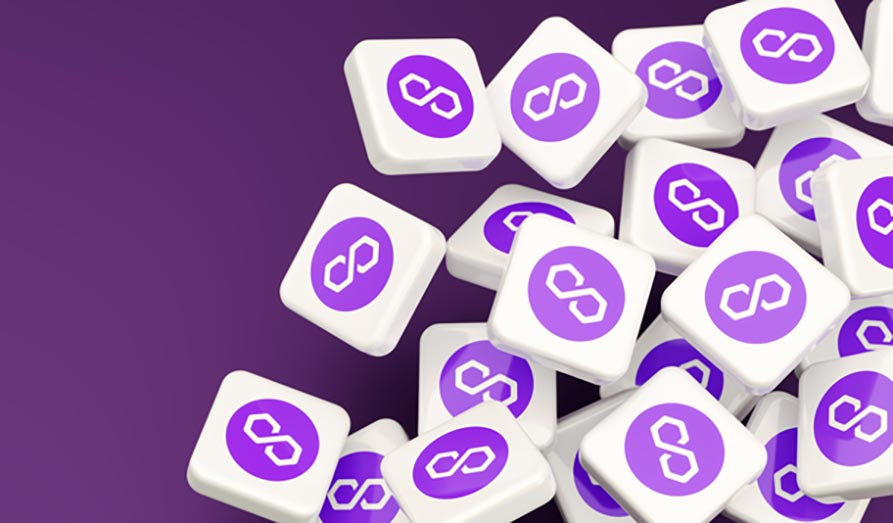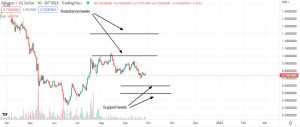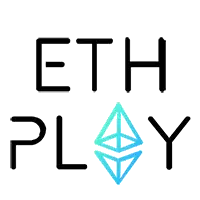
Polygon (MATIC) and most of the major cryptocurrencies remain under pressure after the U.S. central bank hiked interest rates by 75 basis points last week. Still, there are many factors related to the Ethereum merge and the transaction volumes that is worth looking into.
Inflation numbers suggest that the FED needs to be more aggressive in combat to fight inflation, while worries about the impact of aggressive interest rate hikes on the economy and corporate profits continue to influence financial markets negatively. Perhaps the next rate hike will be 1% instead of 0.75%, according to several different analysts.
Go directly to
- 1 What is the Polygon price?
- 2 Higher transaction volume for Polygon, but lower price
- 3 ETH gets more attention and Polygon less, after the merge
- 4 The popularity of Polygon is rising
- 5 Technical analysis for Polygon (MATIC)
- 6 Important support & resistance levels for Polygon (MATIC)
- 7 What speaks for the rise in the Polygon (MATIC) price
- 8 What indicates further downfall for Polygon (MATIC)
- 9 What do analysts and experts say
- 10 Can Polygon survive after the Ethereum merge?
What is the Polygon price?
The price of Polygon (MATIC) has weakened from $1.05 to $0.69 since August 14, 2022, and the current price stands at $0.72. But where is the price of MATIC going next, in the fourth quarter of 2022?
Today, Crypto Lists will discuss Polygon (MATIC) price estimates from a technical and fundamental analysis perspective. Be aware that the Ethereum merge has made transactions way quicker and cheaper for ETH, which could lead to less usage of Polygon in the long run. Further down in this article, the case and future for Polygon is discussed.
Please note that there are also many other factors to consider when entering a position, such as your time horizon, take profit expectations, willingness to take risk and how much margin you got if trading with leverage. Never invest more than you can afford to loose, and try to rather invest too little than too much, in order to minimise exposure to a single cryptocurrency position.
Higher transaction volume for Polygon, but lower price
Polygon blockchain is a rather popular layer 2 scaling solution for the Ethereum network that relies on sidechains for achieving faster and cheaper transactions. The previous blockchain ecosystem was not prepared to scale to match the demands of end-user applications with mass adoption; where transactions were very slow and had very limited throughput. But the Ethereum merge has changed that and everything is way faster now compared to just a few months ago. One of the reasons are obviously the bear market, with lower volumes for most cryptocurrencies. However, MATIC is one of few cryptocurrencies with increasing volumes lately. Since yesterday, the volume is up 16%, even if the trading volume is down over 50% since the peak in the beginning of 2022.
Many blockchain protocols have a limit on the block size, while smart contract platforms usually compromise on decentralization to improve transaction speeds. It is important to say that Polygon solves pain points associated with blockchains, and it has a mission to improve the accessibility of the decentralized finance (DeFi) space to more users.
MATIC is the native cryptocurrency of the Polygon network. MATIC is used to pay transaction fees on the network, but investors should keep in mind that by owning and staking MATIC, they can also vote on Polygon upgrades.
Supply: 7,081,679,872 / 10,000,000,000
Release date: October 11, 2017
Description: What do you know about Polygon? Learn the facts and history, while see where you can trade MATIC. See the latest updates and the live price for Polygon now.
Risk warning: Trading, buying or selling crypto currencies is extremely risky and not for everyone. Do not risk money that you could not afford to loose.
ETH gets more attention and Polygon less, after the merge
The popularity of Polygon is not rising after the Ethereum merge. The highly criticized Robinhood exchange, that put trade restrictions during volatility in Gamestop shares, has added Polygon network as one of their supported blockchains. Probably, it was a decision made long before the Ethereum merge was about to be finalised. After being fined 70 million for misleading customers, Robinhood is not a place that most customers would choose. A few of the favourite crypto exchanges for Matic include Kraken, Binance, Kucoin and Gate.io.
People thinking that “sending crypto on the Ethereum network has become increasingly expensive due to rising gas fees“, is simply not true. It’s rather the opposite, something that anyone sending ether will notice. Markus Jalmerot, the co-founder of Crypto Lists says: “ETH transaction costs has been reduced drastically, by up to 90% during Crypto Lists latest tests. Polygon need to step up their game to handle more transactions per seconds in order to be a competitive alternative to ETH. Everyone trading in January, 2022, probably remember the clogged Polygon network, even though transaction volumes where 8-10 times higher at Ethereum. Polygon must be able to handle way more transactions, like Ethereum can after the merge, or they will be a page in the history books“.
The popularity of Polygon is rising
Despite this, the upside potential for Polygon (MATIC) remains limited in Q4, especially after comments from FED that rate cuts are not foreseen until 2024. Federal Reserve lifted its policy rate by 75 basis points last week to a 3.00-3.25% range and signaled more large increases to come in new projections showing its policy rate rising to 4.40% by the end of this year before topping out at 4.60% in 2023.
Investors continue to stay away from riskier assets, and going forward, the market is going to be hypersensitive to any sort of Fed comments. Brandon Pizzurro, director of public investments at GuideStone Capital Management, said:
“St Louis Fed President Bullard reportedly said the U.S. has a serious inflation problem, and the central bank’s credibility would be at risk if any attempt was made to ease the 2% inflation target. This means more pain for equities and cryptocurrencies; the worst is ahead of us and not behind us.”
Technical analysis for Polygon (MATIC)
Polygon (MATIC) has weakened from $1.05 to $0.69 since August 14, 2022, and the current price stands at $0.73. MATIC might have a hard time holding above the $0.70 level in the upcoming weeks, and a break below this level would indicate that MATIC could probably test the price level at $0.60.
On the chart below, we can see that MATIC has been moving in the range from $0.70-$1 last several weeks, and as long the price of MATIC is below $1, we can’t talk about a trend reversal, and the price of MATIC remains in the SELL-ZONE.
Important support & resistance levels for Polygon (MATIC)
On this chart (the period from April 2022), I marked important support and resistance levels that can help traders to understand where the price could move. Polygon (MATIC) remains under pressure, but if the price advances above $0.80, the next target could be resistance at $1. The current support level is $0.60, and if the price breaks this level, it would be a “SELL” signal, and we have the open way to $0.50. If the price drops below $0.50, which represents very strong support, the next target could be located around $0.40.
What speaks for the rise in the Polygon (MATIC) price
The last several months have been extremely taff for the cryptocurrency market, and cryptocurrencies have been suffering from heavy selling due to hawkish signals from central banks and uncertainty because of the Ukraine crisis.
Polygon (MATIC) remains under pressure, but if the price advances above $0.80, the next target could be resistance at $1. Traders should also consider that the price of Polygon (MATIC) is correlated with Bitcoin, and if the price of Bitcoin jumps above $22000, we can see MATIC at higher price levels.
What indicates further downfall for Polygon (MATIC)
Polygon (MATIC) has weakened more than 25% since August 14, and the risk of further decline for MATIC is not over. Multiple factors appear to be causing investors to distance themselves from this cryptocurrency. As usual, MATIC’s recent huge volatility is highly associated with the price of Bitcoin and with the U.S. stock market.
The upside potential for Polygon (MATIC) and the cryptocurrency market remain limited, especially after comments from FED that rate cuts are not foreseen until 2024. Salah-Eddine Bouhmidi, head of markets at I.G. Europe, believes that the price of Bitcoin is on track to plunge to $13,500 by the end of the year, and if this happens, MATIC will certainly be below $0.50.
What do analysts and experts say
Analysts and experts have warned that a global recession could be on the horizon, and the price of Polygon (MATIC) might have a hard time holding above the $0.70 level in the upcoming weeks. The U.S. Federal Reserve took a more aggressive stance to fight inflation by raising interest rates, and risk-on assets such as cryptocurrencies tend to suffer in such conditions. The fourth quarter of 2022 will likely be a tough period for MATIC, and according to Mike Novogratz, CEO of Galaxy Digital, Polygon (MATIC) and many other cryptocurrencies could decline even more. Craig Erlam, a Senior Market Analyst at Oanda, said that the outlook for risk appetite in the near term is not looking good, and cryptocurrencies would not make any significant jump until the Fed shifts its policy from hawkish and goes back to monetary easing.
Can Polygon survive after the Ethereum merge?
After 80-90% lower transaction costs for Ether, and way quicker transactions – is there still a case for Polygon (MATIC)?
The big problem with Polygon will always be the amount of users compared to Ethereum. Questions to ask yourself: How quick and easy it is to sell assets held in Polygon. During some of my own tests, it’s extremely hard to sell NFTs on the Polygon chain. Since the summer of 2022, it is now possible to create, buy and sell Polygon NFTs on Opensea. While it might take some time for Polygon to take off here, it could either go huge or totally fail. It’s hard to predict. The way that Polygon is created is to offload part of the traffic that goes through Ethereum, where transactions are processed separately. During January, 2022, when the trading and transaction volume was really high for Polygon, the network failed. That was even with way way lower numbers than Ethereum. Personally, I moved away from Polygon at that time and decided to not use it anyway – after waiting 10h+ to sell some Matic assets. If Polygon want to survive after the Ethereum merge, it is high time that they scale their network to handle more transactions. Otherwise, their adoption rate and popularity might be short-lived. Both cryptocurrencies and blockchains are heavily dependent on the usage – and then how they can handle the growing demand. How will it go for the Polygon price in Q4, 2022? Time will tell..







 BTC casino for the weekend? Try Flush with Polygon and more!
BTC casino for the weekend? Try Flush with Polygon and more! Deposit with AVAX and MATIC on Crazy Bit's no-KYC casino now
Deposit with AVAX and MATIC on Crazy Bit's no-KYC casino now ETH Play gets 172 Pragmatic Live casino games
ETH Play gets 172 Pragmatic Live casino games Big Bass Bonanza from Pragmatic Play win best game
Big Bass Bonanza from Pragmatic Play win best game 3 Bitcoin casinos to try the great Drops & Wins tournament!
3 Bitcoin casinos to try the great Drops & Wins tournament!
























